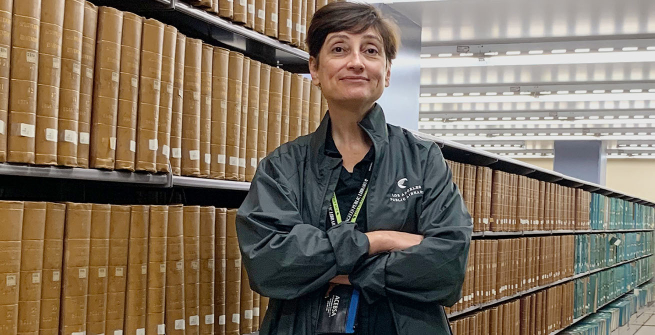As part of the Getty’s Pacific Standard Time series, the Library Foundation of Los Angeles & L.A. Public Library are developing a new project, titled No Prior Art, to open in 2024. The theme for this third regional Pacific Standard Time collaboration is focused on art and science and our project will engage with this theme by examining the art and science of patents and invention. Our interest in patents and inventions comes directly from the Library and its collections. As an official U.S. Patent and Trademark Resource Center (PTRC), Los Angeles's Central Library is home to the most extensive patent and intellectual property collection on the West Coast. To better understand this incredible resource, we sat down with Stella Mittelbach, the Science, Technology, & Patents Librarian to ask her a few questions.
A key inspiration behind the No Prior Art exhibition is the Central Library’s role as a Patent and Trademark Resource Center. Can you tell us what the Resource Center is and how it came to be?
Our PTRC at Central Library is one in a network of over 80 Patent and Trademark Resource Centers designated by the United States Patent and Trademark Office. We disseminate patent and trademark information to the public. Short of giving legal advice, we can use library resources to answer a lot of questions about patents and trademarks and we show people how to perform a preliminary “prior art” search using an example—That’s where you look at previously granted patents and patent applications that may be in the same category as your invention to make sure your invention is really new.
So, here is a little mystery—Los Angeles was chosen by the United States Patent Office as one of the original 22 sites for patent depositories in 1870. Back then, of course, it was all printed patents and paper classification manuals. But Los Angeles Public Library didn’t officially exist until 1872. So, I’m not exactly certain what year we were actually first up and running as a patent depository. The library fire in 1986 completely gutted our Patents Room. So, sadly all those old records went up in smoke. A lot of the resources were eventually replaced, but not all.

Who makes use of the Patent and Trademark Resource Center?
Mostly independent inventors and small business owners come to our PTRC, but also people who are just curious about the patenting and trademarking application process. It’s not something most of us learn about in school and helping these folks is one of the most fun parts of my job. I treat every inventor with the same respect, whether they are a middle-school student or an adult who happens to have little previous knowledge about the workings of intellectual property in the United States.
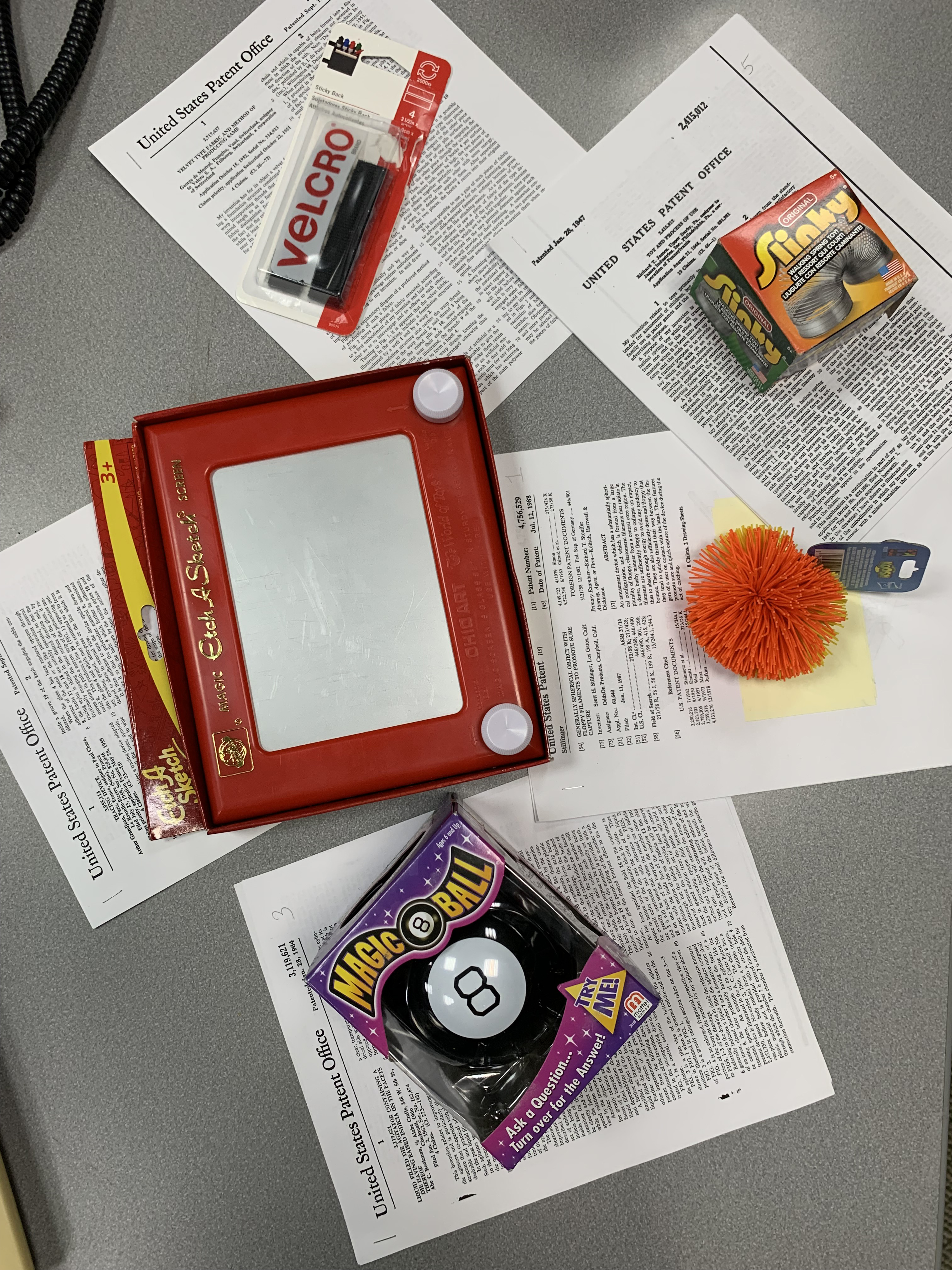
What are some of the tools available at the library for inventors?
We have some instructional booklets and research guides provided by the USPTO, as well as some great books from Nolo Press such as Patent It Yourself and Patent Pending in 24 Hours. If you need a computer with internet, we’ve got those. In fact, you can access most of the tools you need to perform a U.S. or foreign patent search from any internet connection. However, we librarians can help inventors learn to navigate the USPTO website and databases which can be pretty daunting.
There are a couple of legacy databases that you can only access at PTRCs and at the USPTO Public Search Facility called PubEAST and PubWEST, but I don’t usually recommend those for first-time searchers. A lot of the very old annual reports and gazettes from the USPTO have been digitized here and there, but we still have a lot of these volumes in print for people doing historical research.
As a Patents Department Librarian, you are often the first point of contact for inventors. How do you navigate supporting their research, while keeping their inventions a secret?
Usually at the outset, I remind inventors not to disclose the details of their inventions publicly, even to me. Once the inventor makes a public disclosure, they need to make sure to get their non-provisional patent application submitted within a year. It is sometimes helpful to know the broad category of their invention though. When I show them how to perform a preliminary prior art search I might use different examples of inventions of varying complexity. Of course, even if an inventor reveals more than they should about their invention, I keep that information confidential.
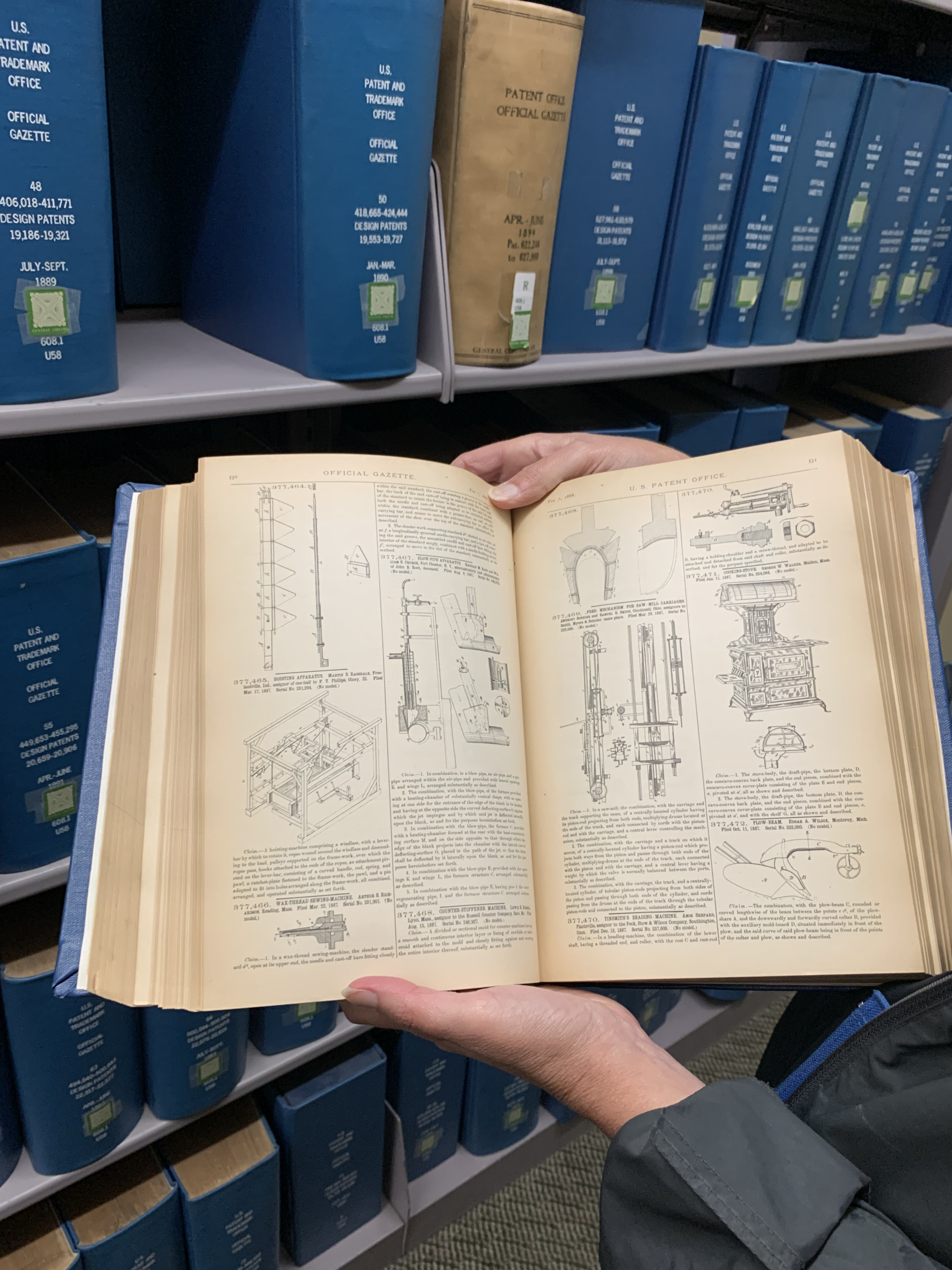
What are some other responsibilities of a Patent Librarian?
Once a year, I go to an intensive training seminar at the USPTO in Alexandria, Virginia, and train the other librarians in my department if there are any new procedures. I keep our website updated and try to include as many links to resources in Spanish as possible.
Aside from inventors, we also teach library patrons doing historical and genealogical research how to use our resources, say, if they are looking for one of their grandparent’s patents. Once in a while USPTO personnel come to do a public roundtable or roadshow in the auditorium and I help facilitate.
How have the Patent and Trademark Resource Center and the patent collections changed over the years?
Before the famous Central Library fire in 1986, there was a Patents Room with lots of staff that were extremely busy. When Central Library reopened in 1993 the PTRC (actually back then it was called the Patent and Trademark Depository Library) was moved into the Science & Technology Department on Lower Level 2 in the East Wing of Central Library. We used to get physical copies of patents either on microfilm or on a CD-ROM and searchers had to wade through a lot of printed manuals. Now there are over 11 million U.S. patents so we can’t possibly have a physical copy of all of them. Unless you are doing a plant patent search for example or looking for a British patent from the 1700s, for which you would need to reference the physical copies at Central Library, most everything you want will be digital. Thank goodness for the web.
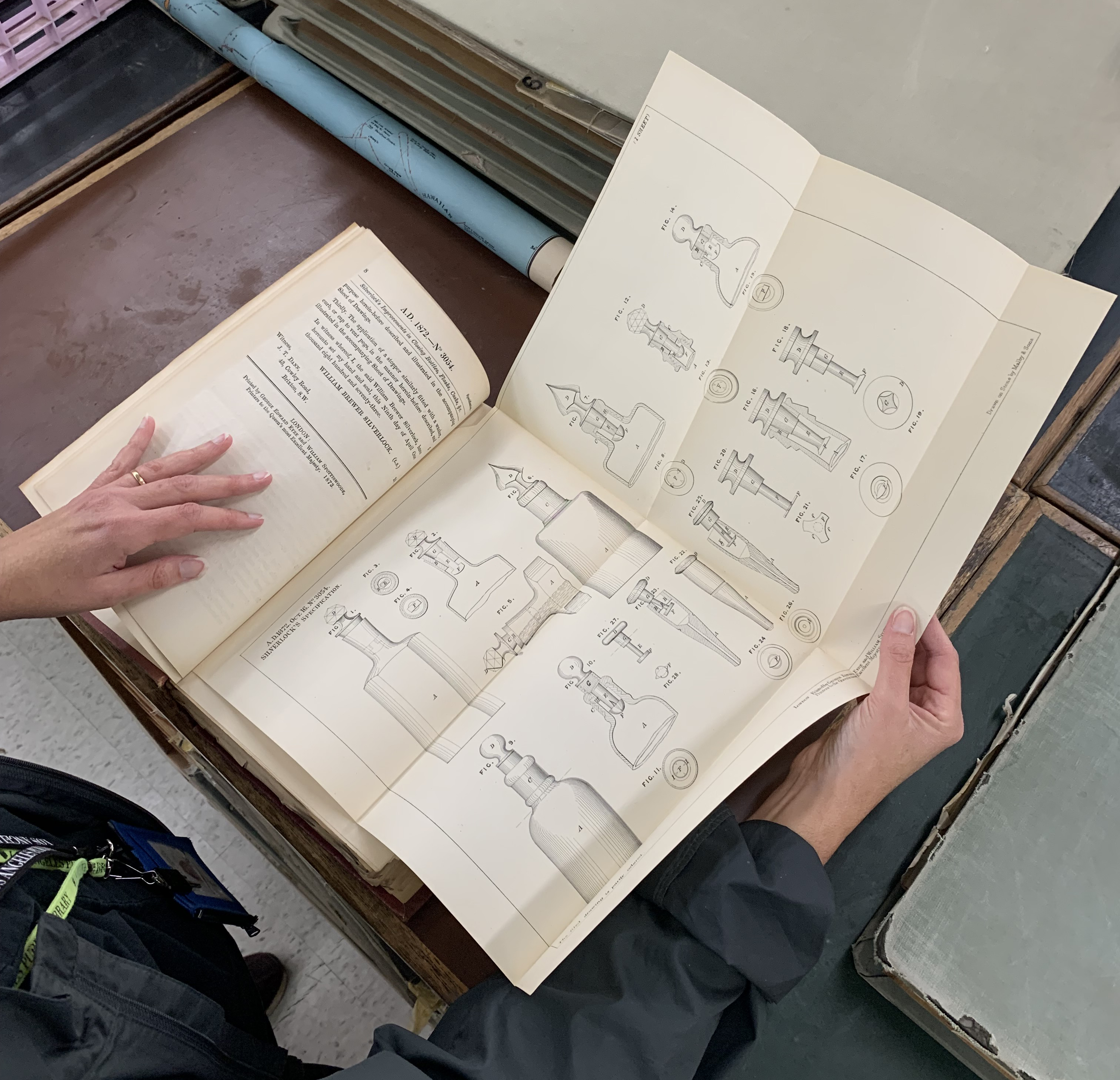
What makes the library a place of innovation?
We have a slogan, “We welcome everyone.” There is so much untapped creative potential in this city and not everyone has the opportunity to formally study industrial design or engineering at a university. The library makes a ton of resources available for people who want to gain knowledge and skills, from free access to LinkedIn Learning (formerly Lynda.com) for training videos to ebooks to our print collection. Now aside from online resources and our physical collection, we have an amazing makerspace on our floor called the Octavia Lab where actual prototyping can and does take place. We have 3-D printers, a CNC mill, a laser cutter, the Adobe Creative Suite, and more.
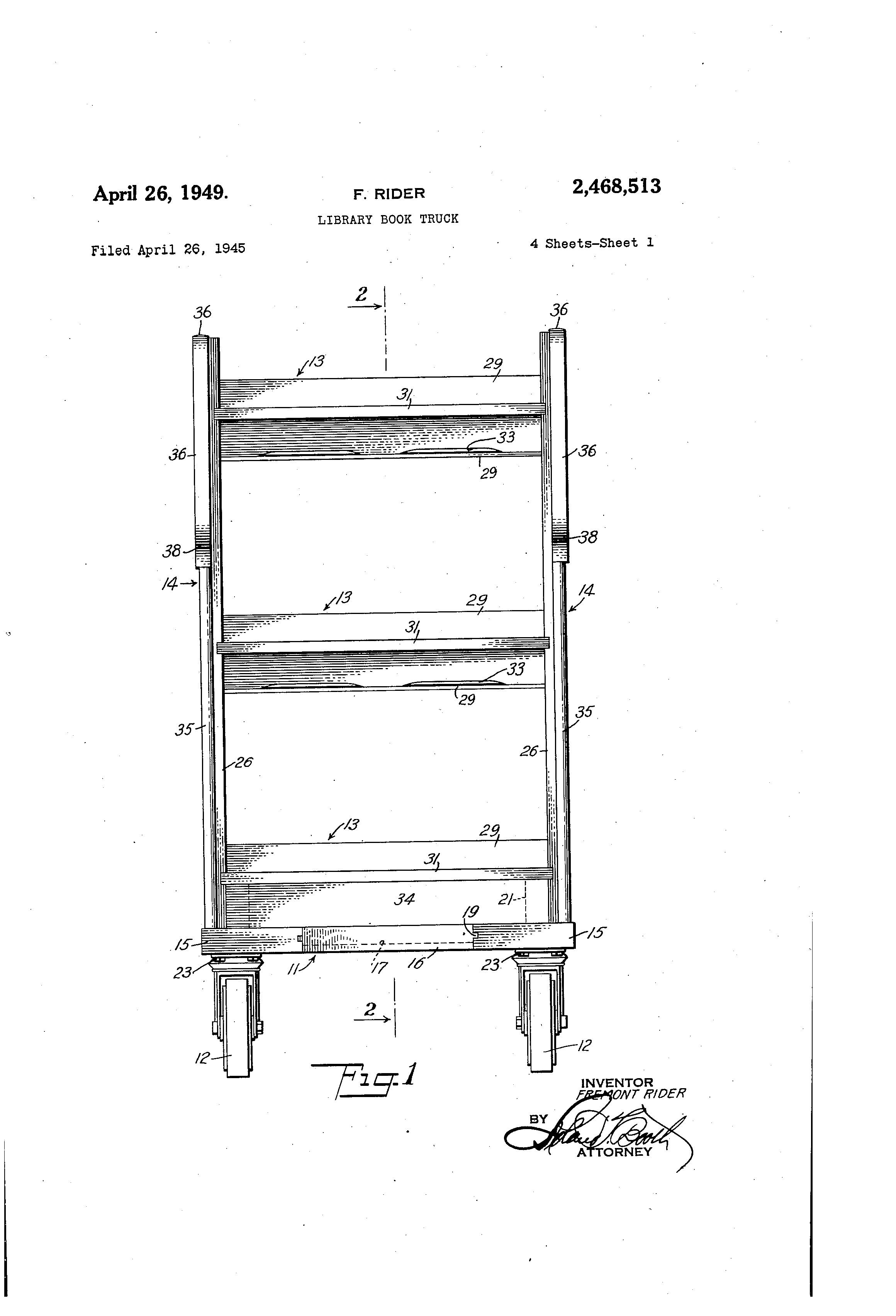
What do you hope to see in the No Prior Art exhibition?
Every year when I visit the USPTO, I get to see the super interesting exhibits at the National Inventors Hall of Fame Museum. It would be cool to see some of the old patent models displayed and some odd forgotten inventions. I’m excited to see what the team comes up with!
—Written by Todd Lerew, Director of Special Projects, and Julia Tcharfas, Research Assistant, No Prior Art
